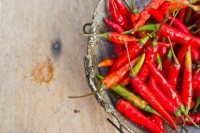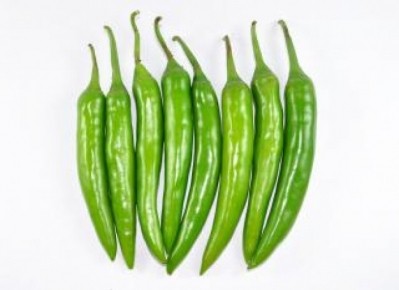The thrill of the taste: Why do we like spicy food?

Professor of psychology at the University of Pennsylvania, Dr Paul Rozin, tried to condition rats to like the taste and sensation of chili peppers both from birth and by gradually adding chili to their diet, but found that both groups of animals preferred the bland food.
In humans, social and cultural factors can come into play in developing a liking for spicy – these could vary from repeated exposure to spicy flavours, and specific types or cuisine to the desire to be perceived as an adult or to be involved in certain cultural customs, according to Nadia Byrnes, lead author of a study recently published in Appetite Journal.
Other research has suggested that an increased liking for spicy food is merely due to the effects of desensitisation, meaning the perceived intensity of capsaicin was lower rendering the sensation more pleasant.
But another factor at play could also be related to risk behaviour, writes lead author Byrnes from Pennsylvania State University, who analysed the personality traits of 103 participants in the study to determine their risk-related behaviour as well previous experience in remembering and sampling spicy food.
“We saw no evidence of desensitization but showed strong associations between sensation seeking and liking of spicy foods,” they write. “High sensation seekers may be more likely to actually enjoy the pungency of spicy foods more than low sensation seekers,” they write.
“As Arnett’s Inventory of Sensation Seeking (AISS) is a measure of the propensity of an individual to seek out and enjoy varied, novel, and complex experiences, and it consistently associates with liking and intake of spicy foods, we suggest sensation seeking directly influences the liking of capsaicin-containing foods, which then drives intake of these foods.”
#FeelTheBurn
But whether the motivating factors behind it are fully understood or not, consumer demand shows no signs of abating.
Natural extract supplier Kalsec published its HeatSync Heat Indexes, which tracks more than 30 different hot peppers using data from Mintel’s Menu Insights and Global New Products Database. Its EU Index which measures new retail product introductions, increased 16% since 2009, while in 2014 DSM conducted a global survey on consumer taste preferences, finding that respondents in countries as diverse as China, the US, Nigeria and Poland rated spicy as their top three favourite flavours from a list including salty, sour, plain or milk, bitter or sweet and sour.
Spicy was predicted to be one of the top flavour trends for the European market, according to Mintel analyst Jenny Zegler last year. She told FoodNavigator that manufacturers should think of tailoring their spicy flavours to certain cuisines. Rather than branding a product as merely spicy, flavour it with regional varieties for the increasingly well-travelled consumer - Japanese wasabi, Indonesian sambal, east Asian shishito or the Indian ghost pepper.
Tapping into this trend is French online retailer Sauce Piquante. Founded by entrepreneur Nicolas Dotcher, it sells over 500 spicy sauces, powders and salsas sourced from around the world, including its own brand La Hellicious.
Source: Appetite Journal
First published online ahead of print, doi:10.1016/j.appet.2016.04.037
“Behavioral measures of risk tasking, sensation seeking and sensitivity to reward may reflect different motivations for spicy food liking and consumption”
Authors: Nadia K. Byrnes, John E. Hayes, et al.









